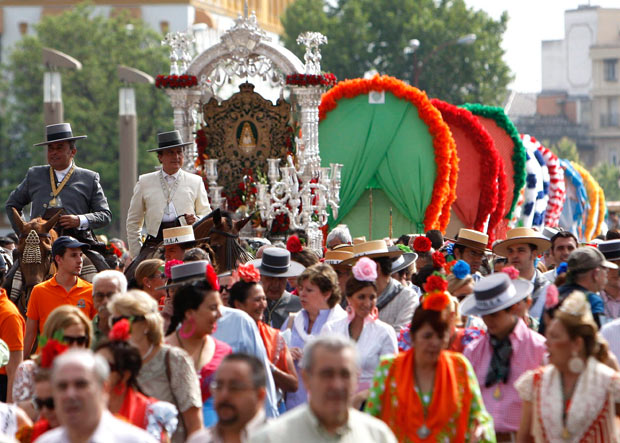The magic of Sevillanas
Posted on 29 October, 2019 in English



Sevillanas is a popular type of flamenco which is usually danced by people at local feriae and pilgrimages in Spain. During the April Fair in Seville, most citizens wear traditional costumes and dance in the main streets and squares, such as Plaza de España. The El Rocío pilgrimage is another occasion to see people dancing Sevillanas. Thousands of people, including the Roma and the Spanish as well as foreigners, specially dressed in flamenco costumes go on horseback or in a caravan from one city to another one. They dance Sevillanas while sitting around the bonfire in the evenings. If you are in Malaga in October, you can see the procession Hermandad de la Caleta. It takes place in the square which is located in front of the Cathedral of Malaga. The Spanish women dance Sevillanas to traditional flamenco music.


The sence of rythm, co-ordination between arms and legs, making gestures precisely, following steps and knowing the choreography are important components, but expressing your emotions while dancing is the most important one in Sevillanas. The combination of technique and expression of feelings makes the dance not only distinctive and dynamic, but also full of passion.
Sevillanas is also a sybolic dance as its four parts mean a meeting of two personas. In the first part, they start a dialogue which develops into a closer relationship between them. The third part symbolises an argument and reconciliation. Sevillanas can be danced individually or in a pair (either two women or one woman and one man).
Traditional Sevillanas costumes are ceremonial, full of vibrant colours and patterns. Having many fabric frills on the sleeves of the dress and at the buttom of the skirt is characteristic. A traditional dress or a skirt is loose since it consists of many layers.
Enrol in a Spanish course in CILE and learn Sevillanas dance once a week with a Spanish Sevillanas teacher.

C/ Córdoba 6, 1st floor, office 102-104 - Málaga, 29001
Tel. +34 952 22 02 74